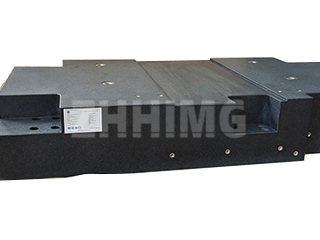The pursuit of ultra-precision measurement requires not only cutting-edge instruments but also a faultless foundation. For decades, the industry standard has been split between two primary materials for reference surfaces: Cast Iron and Precision Granite. While both serve the fundamental role of providing a stable plane, a deeper look reveals why one material—especially in today’s demanding fields like semiconductor manufacturing and advanced metrology—is clearly superior.
The Enduring Stability of Natural Stone
Precision Granite measuring platforms, like those pioneered by ZHHIMG®, are crafted from a natural, igneous rock, offering properties that synthetic materials simply cannot match.Granite functions as the ideal reference surface for inspecting instruments, tools, and intricate mechanical parts.
The core advantage of granite lies in its inherent physical stability. Unlike metals, granite is non-magnetic, eliminating interference that could compromise sensitive electronic measurements. It exhibits exceptional internal damping, effectively dissipating micro-vibrations that plague high-magnification systems.Furthermore, granite is completely unaffected by moisture and humidity in the environment, ensuring that the platform’s dimensional integrity is maintained regardless of climate fluctuations.
Crucially, ZHHIMG® and other leading manufacturers leverage granite’s low thermal conductivity.This means that even at typical room temperatures, granite platforms maintain their measurement accuracy with minimal thermal expansion, a property where metal platforms often “pale in comparison.” For any high-precision measurement, the stability of a natural stone base provides a silent, unmoving certainty.
The Strengths and Limitations of Traditional Cast Iron
Cast Iron measuring platforms have long served as reliable workhorses in heavy industry, praised for their robustness, planar stability, and high toughness. Their strength makes them the traditional choice for measuring heavier workpieces and enduring substantial loads. Cast iron’s working surface can be flat or feature grooves—depending on the specific inspection task—and its performance can be further enhanced through heat treatment and careful chemical composition to refine the matrix structure.
However, the nature of iron introduces inherent challenges in ultra-precision fields. Cast iron is susceptible to rust and thermal expansion, and its magnetic properties can be a significant drawback.Furthermore, the manufacturing complexity associated with achieving and maintaining high flatness on a large metal surface is directly reflected in cost. Astute users and metrology experts are increasingly shifting their focus away from archaic standards like the number of contact points on a plate, recognizing that absolute flatness and dimensional stability are the true metrics of quality, especially as workpiece sizes continue to increase.
ZHHIMG®’s Commitment: Setting the Standard for Precision
At ZHHIMG®, we specialize in leveraging the ultimate advantages of our ZHHIMG® Black Granite. With a superior density (≈ 3100 kg/m³) that significantly exceeds many conventional sources, our material provides a truly unshakeable foundation for applications in the semiconductor, aerospace, and advanced robotics industries.
While cast iron maintains a necessary role in certain heavy-duty, less-critical applications, the ultimate choice for modern metrology and ultra-precision industrial base frames is clear. Granite offers the necessary non-magnetic environment, thermal stability, vibration damping, and smooth movement without resistance that defines world-class precision. We firmly stand behind the principle that the precision business can’t be too demanding (The precision business can’t be too demanding), and that ethos drives us to supply granite foundations that are, quite literally, the industry standard.
Post time: Nov-06-2025

